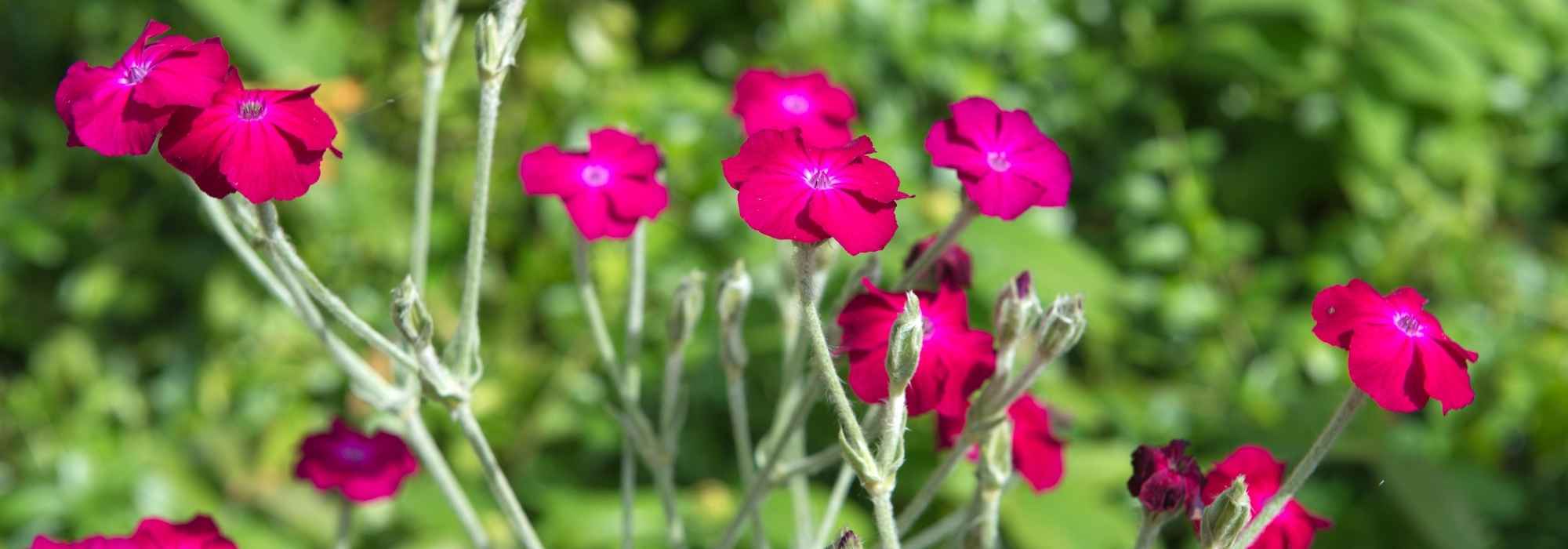
7 perennial plants and biennials for cottage garden
Essential low-maintenance plants
Contents
Parish priest’s gardens, derived from cloister gardens in abbeys, were once cultivated by the parish priest himself. They contained vegetables, fruits, aromatic and medicinal plants… But also perennials, biennials and flowering annuals! These plants had two roles: to provide a pleasant setting (and place for meditation), but also to provide cut flowers to decorate the church altar. Ornamental plants in parish priest’s gardens therefore need to be very floriferous and able to be grown without fuss. Nowadays, the term “parish priest’s garden” may seem a little old-fashioned but it still reflects that peaceful, enchanting garden spirit. If you want to bring this atmosphere to your own garden, discover 7 perennials or biennials emblematic of parish priest’s gardens in our guide.
Alchemilla mollis or lady's mantle
Alchemilla mollis or common lady’s mantle, also called Our Lady’s mantle, is a hardy, trouble-free perennial inseparable from parsonage gardens and English gardens.
It is an excellent groundcover that will naturalise quickly. But it can also be used to adorn borders or to accompany the base of rose bushes. Its plicate leaves with silvery sheen are delightful and have the advantage of being semi-evergreen. These leaves elegantly catch the morning dew. From June to August, Alchemilla rewards with a vapourous flowering made up of chartreuse-green flowering stems, often used in dried arrangements.
Alchemilla is a very easy, undemanding plant, suitable for both beds and rockeries. It prefers heavy, clay soils but adapts to all situations, favouring fairly light partial shade.
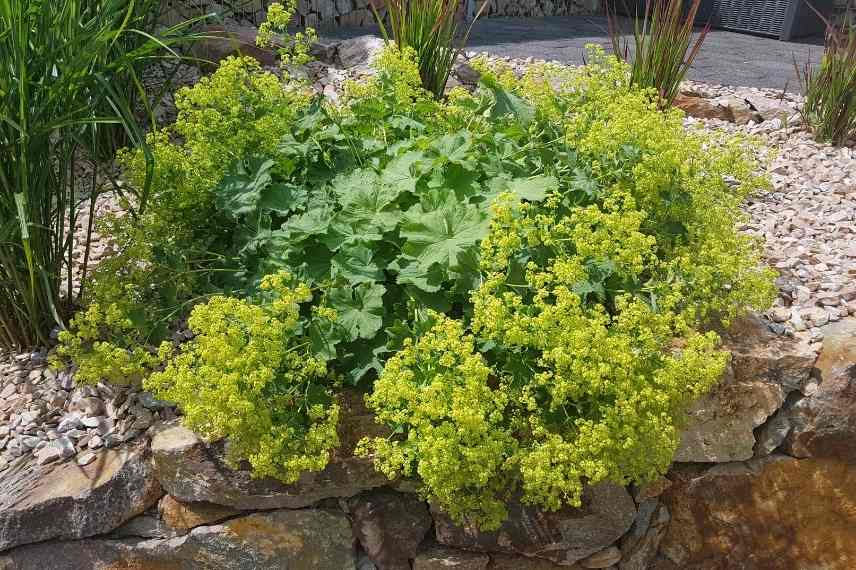
Purple foxglove or Lady's glove
Digitalis purpurea, also called purple foxglove or Lady’s Glove, is a spontaneous plant of our cool, shaded woodlands and inseparable from old shaded cottage gardens. It is naturally rather biennial but can be considered perennial if flowering spikes are cut before seed formation. In any case, it self-seeds so well that, whatever happens, you will enjoy your foxgloves for many years.
They will punctuate the garden wherever they choose with large flowering spikes, appearing from June to August, in shades from pink to purple or sometimes almost white. The foxglove combines easily with other perennials and annuals that are summer-flowering, bringing a poetic touch to cottage gardens.
Lady’s Glove appreciates well-drained soil rich in organic matter. Purple foxgloves flower well in part shade or in non-scorching sun. They are hardy, require only occasional watering during periods of severe drought and may need staking if too exposed to wind.
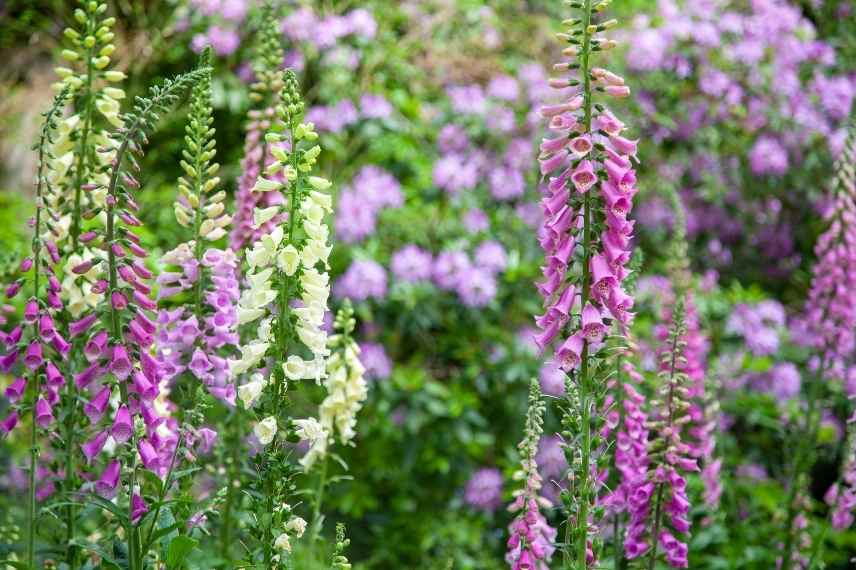
Lamprocapnos spectabilis or Bleeding heart
Lamprocapnos spectabilis (formerly named Dicentra spectabilis) or Bleeding Heart is a charming perennial with heart-shaped flowering in shades of white and pink appearing from April to June. The luxuriant, finely divided foliage, soft green or grey-blue, is also utterly beautiful.
This friendly perennial has stood the test of generations of gardeners without going out of fashion. It is clearly a must-have in cottage gardens and English-style gardens.
Hardy and easy to grow, Bleeding Heart thrives in damp, shaded spots but tolerates sunny exposure with a good mulch in summer. Do not move plants — they hate being disturbed! Note that they can also be easily grown in pots for a shaded terrace.
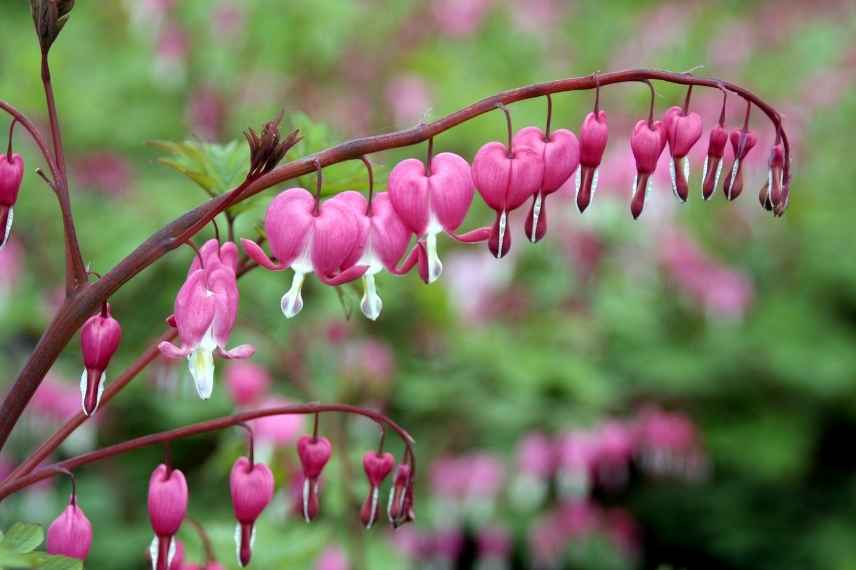
Read also
10 very easy perennials to sowLunaria annua or honesty
Lunaria annua or honesty or money plant is a classic of cottage gardens. This biennial is grown for the beauty of its pearly white seed pods and for its abundant violet-pink flowering from May to July. As it is a biennial (and not an annual as its name might suggest), it produces only a rosette of basal leaves in the first year and it is only in the second year that it flowers.
Abundant fruiting in flat, round siliqua follows the flowering. These decorative fruits are made up of three translucent membranes revealing a few large brown seeds. Once seeds have been dispersed, the faded stems make magnificent dried bouquets.
Easy to grow, the money plant thrives in partial shade. It prefers rich, moist, deep soil. Let it self-seed in the garden or sow seed in your borders, and you will keep it from year to year!
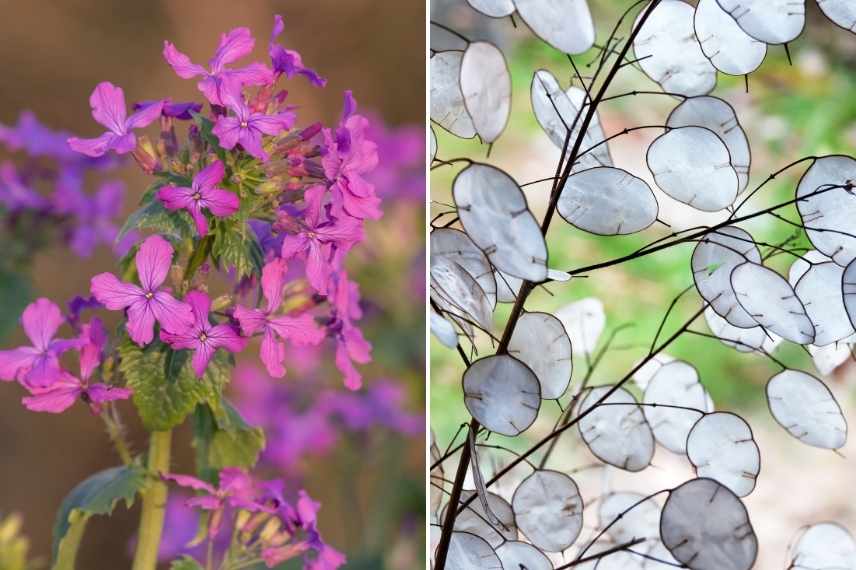
Catchfly or God's-eye
Lychnis coronaria or rose campion or Eye of God grows and develops spontaneously in poor, dry soils. This short-lived perennial, wild and bushy, thus readily settles into even the most ungrateful corners of the garden. Plant self-seeds abundantly. Rose campion is also emblematic of cottage gardens.
Variety ‘Atrosanguinea’ boasts attractive grey, downy foliage with white highlights, complemented by small summer flowers of a carmine red Exceptional.
Accustomed to rocky ground and harsh conditions, rose campion is hardy down to -30°C and copes admirably with drought. Lychnis coronaria thrives in full sun or partial shade in dry to fresh but well-drained soil, neutral to slightly alkaline.
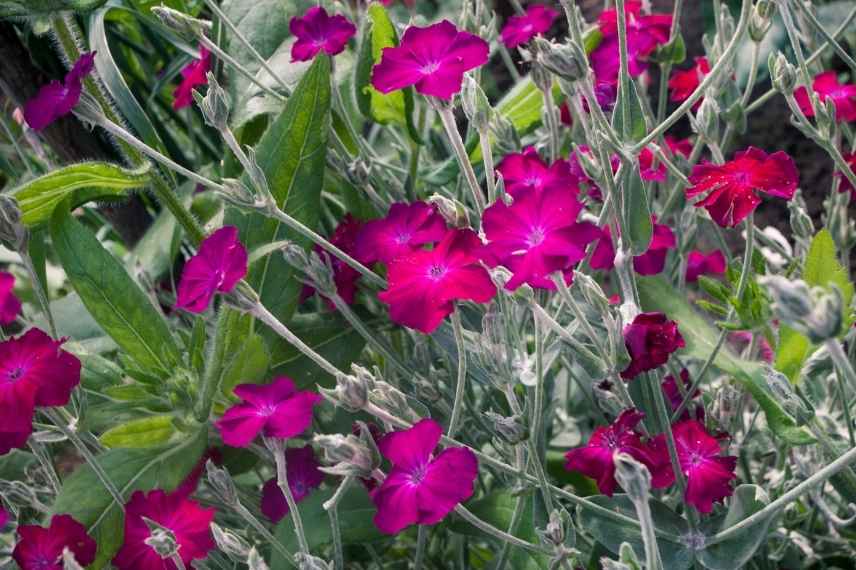
Hollyhock or St James's Staff
Alcea rosea, formerly called Althaea, or hollyhocks or St. James’ staff are tall short-lived perennials with flowering stems up to 2.5 m high, flowering all summer. Often grown as biennials, flowers about 10 cm in diameter, in a wide range of colours, are cup-shaped or pompom. These staples of country gardens and cottage gardens bring verticality to the back of a border, but also along a wall as well as in edging. Hollyhocks self-seed where they please.
The Alcea rosea ‘Simplex’ is a single-flowered variety of hollyhock that wanders naturally through slightly wild gardens. Flowering offers varied shades: white, pink, red… This timeless classic variety is perfect at the back of a border.
Easy to grow, hollyhocks prefer rich, well-drained soils in a sunny position but above all sheltered from wind that can flatten the spikes. These perennials, however, tolerate ordinary soil, even clay, chalky, poor or stony. Alcea rosea copes well with drought and is very hardy.
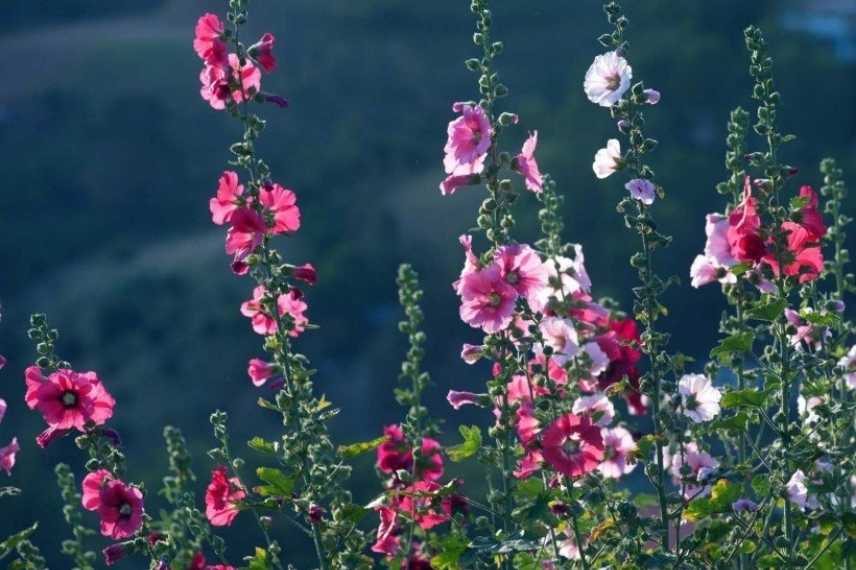
Alcea rosea ‘Simplex’
Dianthus carthusianorum or Carthusian pink
Dianthus carthusianorum or Carthusian pink is a bushy perennial with evergreen, linear green leaves and bright pink summer flowering adorned with a black calyx. It is an emblematic perennial of dry cottage gardens, as they used to grow it to cut flowers to decorate the altar.
This perennial has a compact habit and a tuft of evergreen, herb-like leaves. Flowering occurs in July in rounded clusters of erect, dentate, dark pink flowers.
Carthusian pink is ideal in a rockery, in a bed for cut flowers or as a sunny border and fits perfectly in a slightly wild garden.
Hardy to -15°C, Dianthus carthusianorum is planted in free-draining, dry, poor, stony soil in full sun. In richer soil, young plant tends to lose its compact character. This perennial is particularly resistant to drought. This carnation does not tolerate soils that are too wet, especially in winter, nor soils that are too acidic.
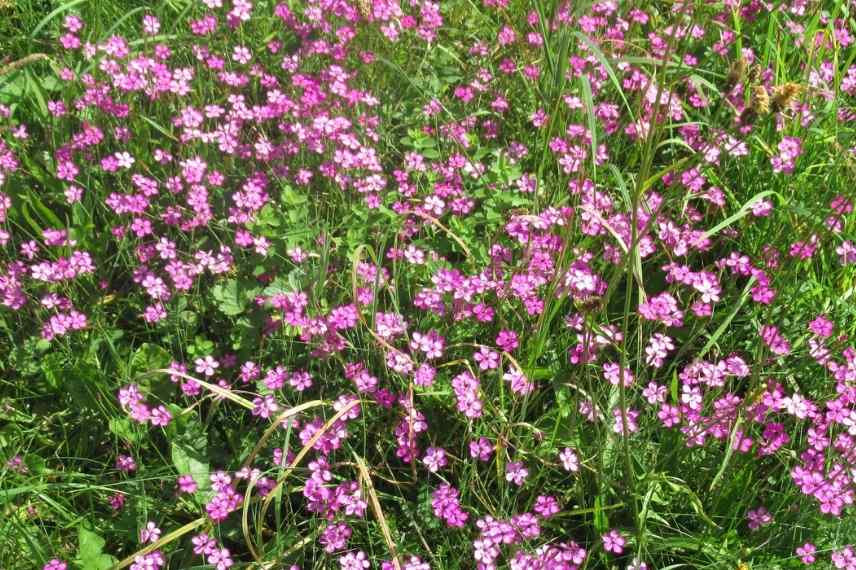
Dianthus carthusianorum (Photo: D. Short)
To find out more...
You may have noticed that the emblematic flowers of vicarage gardens often bear an old name with Christian connotations. No surprise there: these plants were named by the ecclesiastics who originally grew them in their garden within an abbey or at the vicarage. We could also have added to the list Jerusalem sage (Phlomis fructicosa), Solomon’s seal (Polygonatum sp.), Our Lady’s candle (Verbascum nigrum), St Anthony’s willowherb (Epilobium angustifolium), Christ’s eye (Aster amellus) or even the Beard of the Good Lord (Aruncus dioïcus)… The list goes on.
Don’t be put off by these terms, especially as they are often old-fashioned and no longer much used. Just bear in mind that a vicarage garden should be a cosy place where people enjoy spending time and where the most undemanding plants thrive.
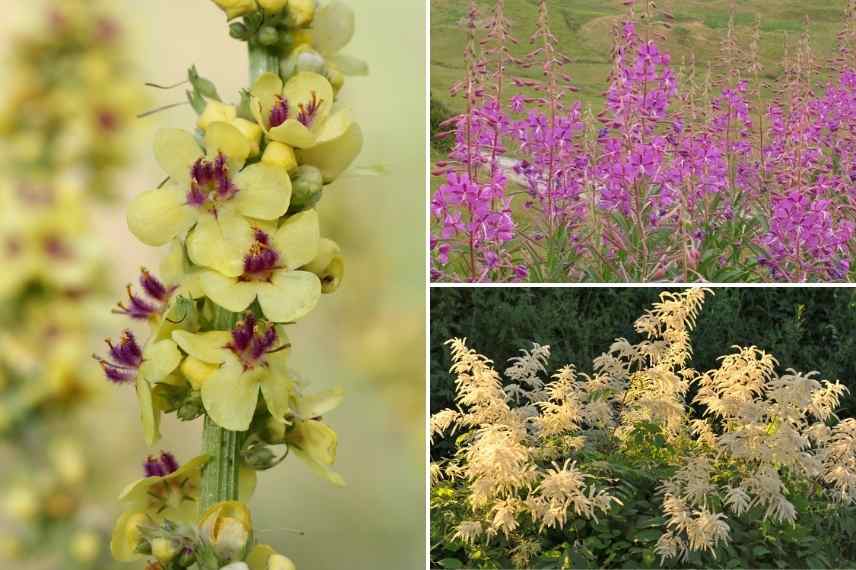
Verbascum nigrum or Our Lady’s candle, Epilobium angustifolia or St Anthony’s willowherb, Aruncus dioïcus or goat’s beard
→ Discover our selection of perennials for vicarage gardens in our online nursery.
- Subscribe!
- Contents
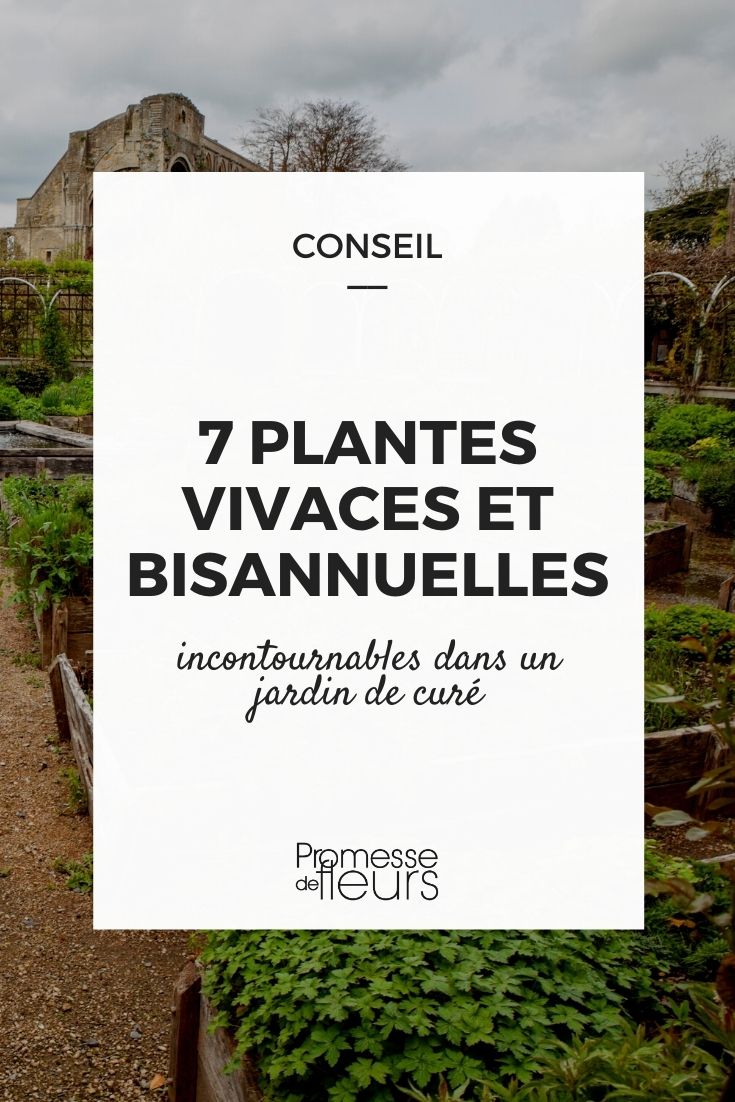































Comments